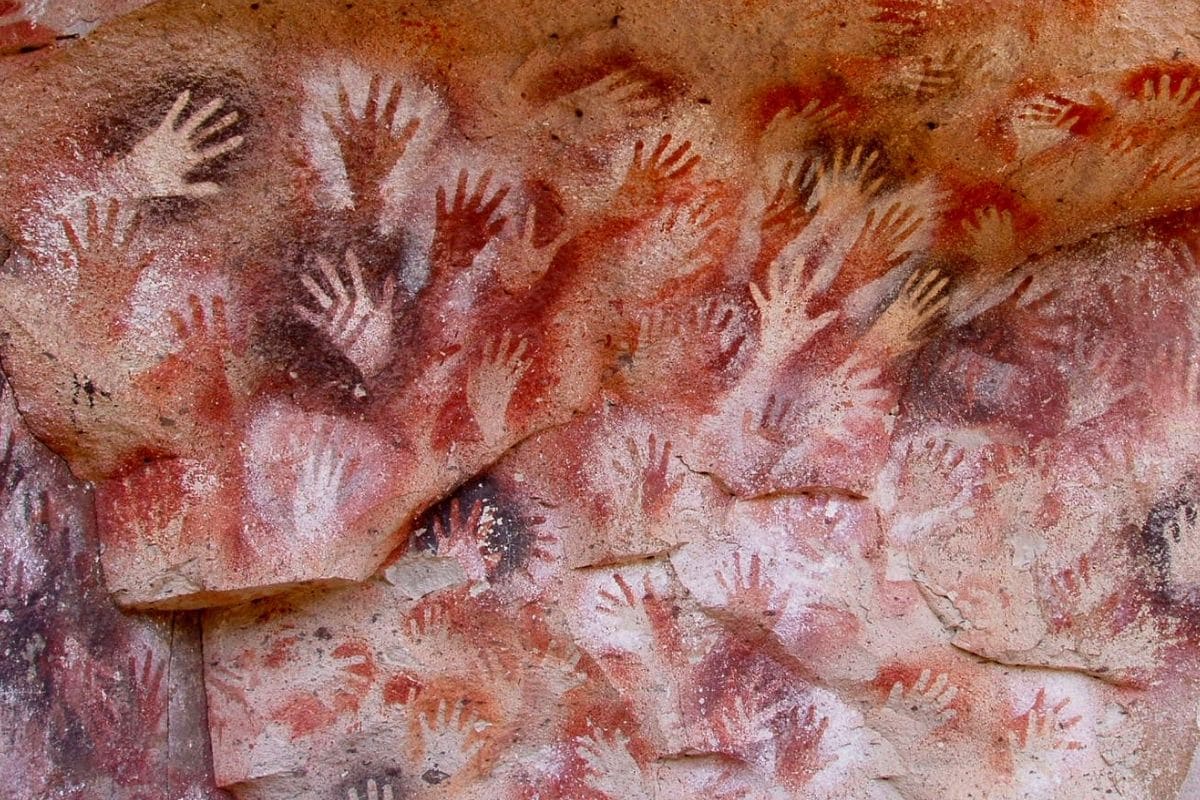

A surprisingly large part of the rock art in five Spanish caves appears to be the work of children.
Researchers write that in the magazine Journal of Archaeological Science† They are based on an analysis of so-called hand motifs: images of hands on rock walls. They are quite well-known and common forms of rock art that came about because people first smeared their hands with ink and then pressed the rock wall. Or because people held their hand a short distance from the rock face and then – with the help of a hollow bone or hollow stem – blew ink on it. For the new study, the scientists explored hand motifs in five different Spanish caves, most of which were created in the latter way.
The makers
Ever since the discovery of the prehistoric hand motifs, researchers have wondered who left these forms of rock art behind. And in the past, attempts have already been made to determine whether these were the hands of men or women on the basis of the ratio between the fingers depicted. But in the new study, scientists are taking a different tack. They check how old the prehistoric artists were.
High percentages
And that does yield surprising insights. For example, a striking number of handprints appear to be the work of children. And sometimes even very young children; in one of the caves, up to 9 percent of the recovered handprints appear to have been made using baby and toddler hands. And the handprints of children between 4-12 years are also well represented. Just like the prints of teenagers and young adults.
Surprising
“It is surprising that children – especially in such high percentages – were involved in this activity,” said researcher Verónica Fernández Navarro. “Some Paleolithic handprints were initially expected to be children’s because they were so small, but the percentage of child-made handprints we have now found in this study has exceeded all expectations.”
The research
The scientists base their conclusions on an extensive analysis of the handprints. For example, the width and length of the hand and individual fingers were determined for each print. In addition, the scientists also started experimenting. Subjects of various ages held their hands some distance from a rock and then sprayed ink on it. Or they smeared their hand with ink and then pressed it on a rock. The purpose of those experiments was to determine whether the print could be used to determine the age of its maker.
Correction
It soon became apparent that the prints produced in this way could indeed be used to determine the age of the maker. However, in the case of the prints where ink was blown onto the hand, a small correction had to be made, because the hand print was often larger than the hand that was used to make this print. This is because the test subjects – just like prehistoric artists – did not place their hand on the rock wall while blowing pigments, but kept them at a small distance from the rock wall. But when researchers took this into account and corrected their measurements of the handprint accordingly, it was quite possible to infer the age of the maker from the length and width of the print and individual fingers. The next step was to apply that knowledge to the prehistoric prints and determine how old the creators were. And it soon became apparent that a considerable part of the rock art was the responsibility of prehistoric children (sometimes even toddlers) and teenagers.
It is at odds with what is often assumed about prehistoric art, says Fernández Navarro. “Until now, the creation of prehistoric art has mainly been associated with men: a few chosen ones – sometimes shamans – who created these images in a symbolic and magical setting. If we look at the pictures and illustrations in academic and popular books for the general public, the people responsible for the art are almost always grown men. This study changes our view of (prehistoric, ed.) art.”
Function
But how should we interpret prehistoric art? “Graphic activity appears to have been something that the whole group could participate in, involving both children and adults,” the researchers write in their study. “And the fact that even young members of the community — right down to infants — took part suggests that this activity was meant to work on bonding within the group.”
Follow-up research
It should be noted that the research was only conducted in five Spanish caves. Whether rock art was created in the same way in other countries and even on other continents, and perhaps had a similar function, is unclear. The researchers hope that their methodology will also be applied to rock art in other caves in the future.
“We still have a long way to go,” noted Fernández Navarro. But the new research has taken an important step. “Early results now indicate that we need to let go of our current ideas about who made this rock art.”
Source material:
†Visualizing childhood in Upper Palaeolithic societies: Experimental and archaeological approach to artists’ age estimation through cave art hand stencils” – Journal of Archaeological Science
Interview with Veronica Fernández Navarro
The image at the top of this article shows rock art in Argentina. The photo was taken by Mariano (via Wikimedia Commons†